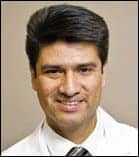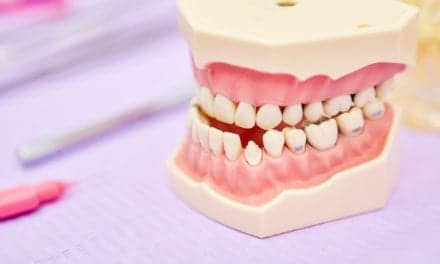Oral appliances for sleep apnea are not the only device or service dental sleep medicine practitioners offer that patients’ medical insurance could cover.
By Jane Kollmer
Of the services dentists offer that can be submitted for medical insurance reimbursement, oral appliance therapy is routinely covered because it treats a medical condition—sleep apnea.
There is no question of whether oral appliances for sleep apnea therapy are dental, medical, or cosmetic, according to Randy Curran, CEO and founder of Pristine Medical Billing, a company that focuses on billing medical services for dental offices. Oral appliances fall solidly into medical insurance coverage. “There are policies written around it,” he says.
But dentists may not realize that oral appliances for sleep apnea are not the only devices or services they offer that can be covered under many patients’ medical insurance plans. In fact, maximizing medical billing for qualified procedures can be a win-win for dentists and their patients. Dentists can grow their referral relationships with physicians and get more consistent reimbursements, and patients potentially have lower out-of-pocket costs and can save their dental insurance coverage for procedures that are not covered by medical insurance.
“Sleep apnea really opened the door to show the medical profession at large that dental providers absolutely have a place to play, that what they’re doing is really amazing with patient care, especially when there’s a mechanical issue,” says Jill Glenn, founder and CEO of Dedicated Sleep, TMD, & Implants, a company that offers business services (ranging from benefit checks to telemedicine solutions) to dental practices.
According to several medical billing companies, dental services and devices that may be eligible for medical insurance coverage include:
- Oral appliances for sleep apnea
- Temporomandibular joint (TMJ) appliances and headache treatment
- Treatment for oral infections, cysts, oral inflammation
- Exams for services covered by medical insurance
- Panorex x-rays for services covered by medical insurance
- Cone beam computed tomography for services covered by medical insurance
- Frenectomy/tongue tie treatment for infants and children
- Repairing accidents to teeth (trauma)
- Mucositis and stomatitis treatment
- Facial pain treatment
- Dental implants and bone grafts
- Wisdom teeth extraction
- Biopsies
- Clearance exams before chemotherapy or surgery
- Botox injections for bruxism and jaw pain
Coverage depends on each patient’s plan policies. But, in general, the most important consideration for dentists is whether medical necessity is established. Then the services related to treating that diagnosis can be incorporated, such as imaging, consultations, impressions, and follow-up time.
Curran stresses that the best route to getting a claim approved is going through a preauthorization process. “A big mistake that dentists make in our industry is they’ll deliver care before preauthorization is approved,” he says. “And with non-emergency services, it’s very difficult to get retro-authorization.”
Glenn agrees that moving too quickly from screening to diagnosis to therapy is a big reason why dental claims to medical insurance get denied. The dentist mentality tends to be, “I address what you need; I start doing it; I submit it,” she says, noting this process frequently occurs within a single patient visit. But with medical insurance, “you can always go forward, take the next step, document it, submit the claim, go forward. But you can’t really go backward. You can’t ever start without consent. You can’t preauthorize something retroactively if you’ve already provided it,” Glenn says.
Marty Lipsey, DDS, MS, president and founder of Medical Billing for Dentists, a company that focuses on medical billing for oral appliance therapy, says another common mistake made by dental sleep medicine practitioners is providing insufficient documentation to medical insurance carriers. “As the attempt to help patients with oral appliance therapy has grown, what we see is more requests…from the medical insurance carriers for increased documentation, increased answers to why, so that’s become more burdensome in dealing with the claims and trying to help patients and dental practices get paid for these appliances,” says Lipsey, who is also the owner of Dental Assisting Institute.
It is all in the documentation, Lipsey says. “Dentists are not used to writing medical-level notes. Physicians write better notes than dentists,” says Lipsey, a dentist himself. “And if dentists want to enter the medical world and the world of medical insurance billing, then I think it’s obligatory on the dentist to know that they have to step up to the level of medical documentation.”
The big difference is medical notes need to be much more detailed than notes required for dental insurance. “Dentists want to, I think, assume that it’s the format. The ‘SOAP [Subjective, Objective, Assessment and Plan] note’ format is probably the most common format that physicians and medical healthcare providers use to write notes,” he says. “But I would say that it’s not so much the format; it’s the detail of the notes. Because even if someone was using a different format but the detail was there, that’ll be acceptable. But what’s not acceptable is a vague, brief note.”
Another reason Lipsey sees denied medical insurance claims is that the submitted diagnostic and treatment codes fail to match. “In the dental world, even though there’s a space on every dental insurance form for diagnostic codes, they’re not required,” he says. But the medical insurance reimbursement forms require one or more diagnostic codes–and they have to match. “If the computer or the medical insurance person reviewing these notes does not see the proper connection between here’s the diagnosis and that’s why we did this procedure, what happens? Denial,” he says.
How much reimbursement a dentist can expect from accepted medical insurance claims per case depends on several factors, but chiefly whether the dentist is in the insurance company’s network.
Traditionally, dentists have not been included in these networks, especially if they are in an area with few similar providers. The dentist can decide how much to charge the insurance company per case and hope they get a decent amount back.
“If you’re doing a lot of large cases, it would be worth it to go through the process of using medical insurance,” Curran says. “If you’re doing cases that are $10,000 or less—maybe it’s only a single post-trauma case—you just don’t expect to get a lot from medical insurance being an out-of-network provider.”
In many cases, the insurance company will issue a “gap exception” whereby they agree to pay an out-of-network provider at the same rate as an in-network provider.
However the industry is shifting, says Curran. Large insurance companies are getting away from gap exceptions and toward having several in-network dentists who practice dental sleep medicine, especially in major metropolitan areas.
Negotiating rates and signing a contract with insurance companies may not sound like an attractive option for dental providers, but if they plan to bill regularly, the benefits of being an in-network dental provider are that the costs are lower for the patient, and the guesswork in pricing is eliminated.
“You’re working with the prices and the fee structure that the health plan themselves says is correct,” says Glenn. “That lets physicians focus on giving good care and having less randomness on how they pursue getting paid.”
Beyond the reimbursement benefits, Jon Nierman, president of Nierman Practice Management, a dental sleep company that offers medical billing services, software, and continuing education courses, says dentists who do medical billing can build referral relationships.
“If they’re getting started out in sleep appliances, we recommend they work with their local medical community and the sleep physicians, and letting those other providers know that they’re billing medical insurance goes a long way to building trust with them and making the physicians feel comfortable referring those patients to you as the dentist,” Nierman says.
Getting into the medical insurance billing world also means knowing what dentists are allowed to do according to the Centers for Medicare & Medicaid Services and state regulations.
“Most of the dental boards have become more dental sleep medicine-friendly than they were a few years ago,” Nierman says. “Something else dentists should know is that under the Affordable Care Act, insurance companies cannot discriminate against a provider based solely on their degree [for claims that are] medically necessary and within the scope of that provider’s practice.
“With all the opportunity there is to help patients who have medical-related symptoms, infection, obstructive sleep apnea, TMJ disorder, or oral surgeries, it’s essential for the dental office to ‘have their ducks in a row’ to maximize medical insurance.”
Photo 218029632 © Andrey Popov | Dreamstime.com





